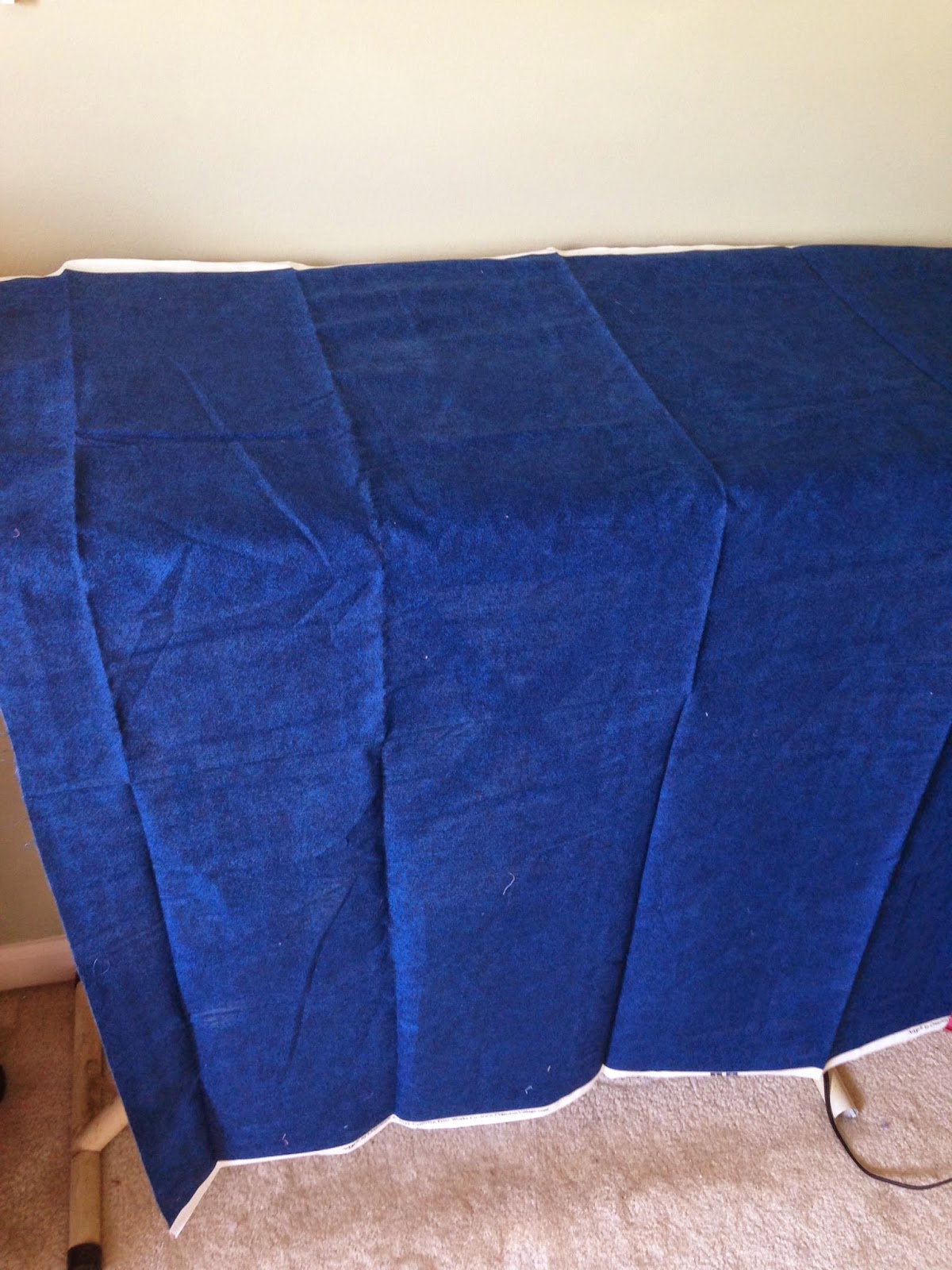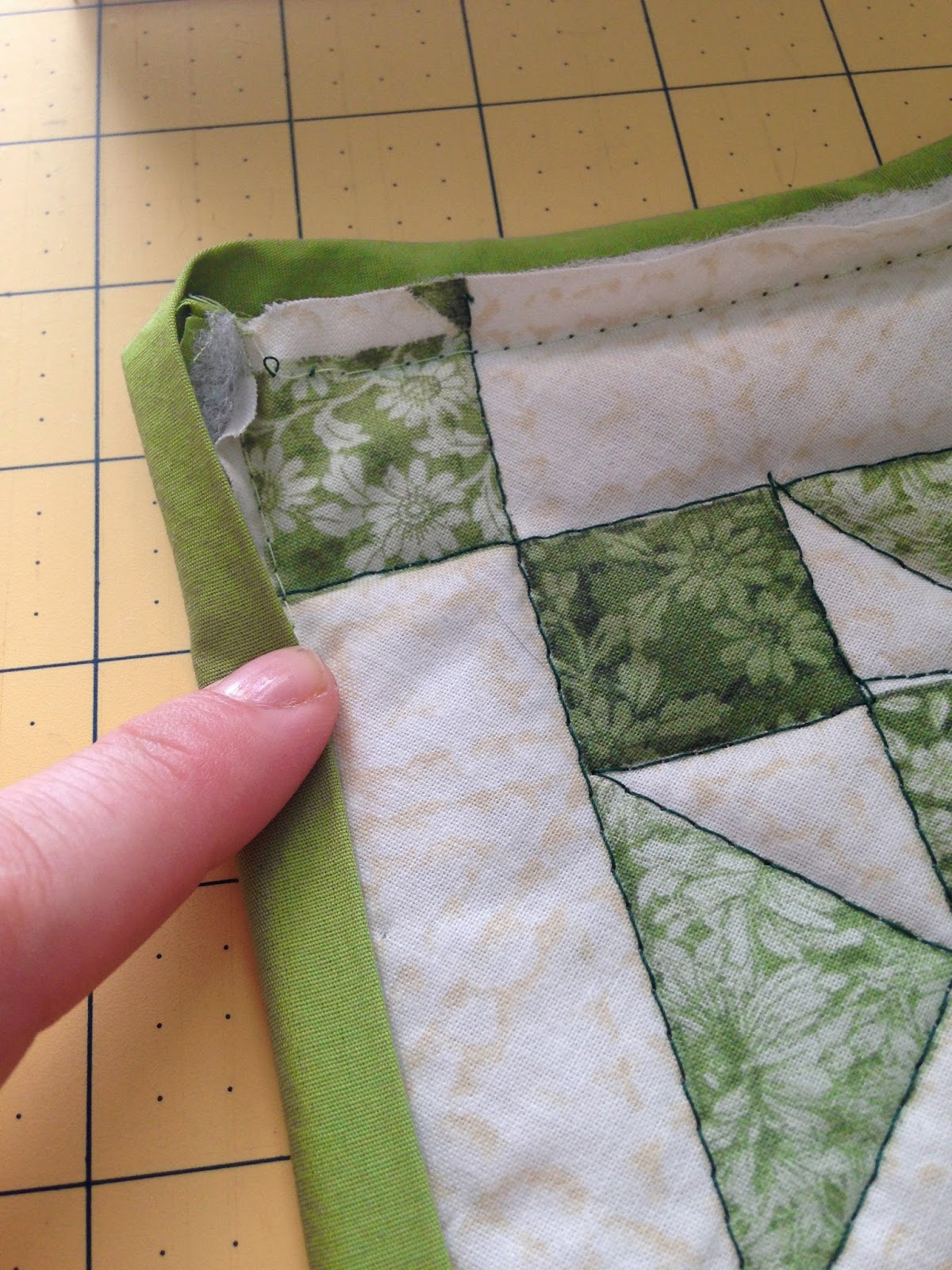1) When it comes to quilting, rotary cutters are a MUST. There is a lot of math, and fractions in quilting, so making precise cuts and measures number one on your list. When it comes to sewing, scissors are fine, and rough edges can be sorted out under the sewing machine. With quilting though, sewing a straight and even line is important.
To see an old example of scissors vs rotary, take a look here: This is the very first thing I put under my sewing machine. I had no intention of making a project, I just wanted to sew stuff together to test out the machine.
This is a very old picture, but this is also one of the very first things I put under my sewing machine, except I used a rotary cutter and a ruler. Again, no project intended, I just wanted to sew stuff together. Though this ended up in a birthday box mailed to my mom as a pillow. My aunt has it for safe keeps now.
2) Your second best friend is a cutting mat. They come in LOTS of different sizes and prices. For more than a year, I used a very small, cutting mat, with no problem at all! I cut large and small fabric on it. With large fabric, you just have to fold it up a few more times, and be a lot more careful. Though you really only need one, I use three cutting mats. I recommend getting the largest one you are able to get for your money, and available space.
I use my large 36" mat, for pretty much everything. It stays on my table as one of the best birthday presents I have gotten from my mother-in-law. The smaller mat on the left, is the one I bought myself when I started quilting, it has been through a lot! It was useful for sewing wherever I had the space in my apartment; desk, table or floor! The third one, on the right, is a rotating mat, I only recommend this mat if you plan to test out different shapes of rulers, or like working with small pieces. The idea behind it, is that you never have to pick up the fabric to cut, you move the mat instead.
3) You only REALLY need just ONE good ruler. Although, I have collected many. In the beginning I used a plastic ruler with my rotary cutter. Did you know rotary cutters are sharp enough to slice through thin plastic? They do over time! So I used a regular school ruler that was metal on one side, and I continue to use that ruler every now and then. My favorite ruler of all time, has GOT to be my 24" x 6" ruler. It is large enough to cut through large yardage and is the length of my cutting mat. Though the ruler you see most often in my blogs is always my 18" x 2" ruler. Small enough for small fabrics, but large enough to cover most medium sized things.
For smaller mats, stick to smaller rulers. :)
4) You need somewhere to start: a straight edge. If there isn't a single edge you trust on your fabric as perfectly straight; there is a method, fold it. A fold is a guaranteed straight line! In this picture you can see I have it folded on a bold line. I decide how much to trim off, just by rounding down. In this case, I lined my ruler with the number 9 on top and bottom of the mat. This was only to trim off the uneven edges, and have a straight line to work with. The whole reason we trim, is that fabric usually comes with uneven angled edges.
5)There is a 'rule of thumb' to never cut past your hand. Part of cutting, is using your hand to put a little pressure on the fabric, to keep it from moving. There are a lot of rulers that help secure fabric under the ruler, but I always do this for added reassurance.
You can either stop cutting and move your hand, or just 'walk' your hand up the ruler as you cut. I prefer to pause my cutting hand, while the left hand moves up.
This assures a clean cut, the whole way through.
6) Now that we have one clean side, you can choose to do the other side at this time too. You can pick up the fabric and align the straight edge on a bold line on your mat and trim the same way.
If you have a large cutting mat, you could also just move your ruler over to the other side, and trim. I chose to do neither. I just cut the strips that I needed from the right side. I left the left side unclean and put it back in my fabric drawer for another time.
7) Now lets talk about cutting fabric that is already sewn together. For this project, I needed to cut my strips in pieces. A few tips here:
First I had to chose which side looked the straightest after sewing. The green looked best. So I lined the green with a bold line on my board.
Then, I needed to trim the edges because the brown was longer then the green.
8) It's okay to use a big ruler to cut small things, but the closer to size you use to your project, the better control you will have over your results. So I put a few rulers next to it, to see which one was the closest size. I ended up going with one of my oldest rulers, the blue one that is on it.
9) When we talked about Ironing We talked about putting the 'seam' to one side. Now, for a quarter of an inch (Or how ever much 'seam allowance' you used) There are three layers of fabric in that tiny spot. So you need to put just a little extra pressure with your cutting hand over those bumps, to cut all the way through it.
Here I have a small ruler that I can control with one hand, and I am using the marks on my board to measure what I cut. Remember to always cut AWAY from your body/hand! ( My index finger is a little too close, but I'm a 'pro' :)
10)Cutting through more than 4 layers may seem like a super quick way to get things cut, but it has it's consequences:
In the above picture I cut through six layers, and the result: an uneven strip. This doesn't look too bad, but depending on your project, a quarter of an inch can make a HUGE difference! I kept this strip because the mistake was smaller than my seam allowance, and wouldn't be noticed...this time!
















































































